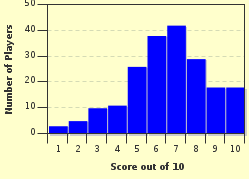Quiz Answer Key and Fun Facts
1. When taking the written driver's test you can expect to see one or more questions concerning the rules for parking. Here is a example of one of the questions you may encounter; how close can you park to a fire hydrant?
2. The drivers handbook tell you to use low-beam headlights when driving in fog at night. If you were asked on the test what type of headlights for fog at night the correct answer would be low- beams, but what is the reason for using low-beams?
3. New drivers are supposed to be aware of and use signals, so on the written test you will be expected to know what the different signals mean. You may be asked: What signal is indicated when you see a arm out of the drivers widow and pointed straight up at the elbow?
4. Across Ontario the laws concerning seat belts are fairly well known, everyone riding in a vehicle must wear a seat belt, or be belted into a booster seat/car seat. How high of a fine, as of 2006, can the driver receive if he/she is charged with a "seat belt infractions"?
5. According to the handbook, if a new driver were to envision the steering wheel as a clock, where should your hands be?
6. While driving on a Canadian freeway (highway) that has two lanes, which lane should you be in?
7. When you take the Ontario written drivers test, one of the questions you may be asked is what should you do if you approach a traffic light and it is not working because of a power failure?
8. What is the legal blood alcohol level for a first time driver?
9. If you are in a accident and assuming that there have been no injuries, at what estimated cost of damage to the vehicle must the accident be reported to the police?
10. In June 2008, the Ontario government passed a new law to protect minors riding in vehicles. What does this law protect children from?
Source: Author
red_stone
This quiz was reviewed by FunTrivia editor
Bruyere before going online.
Any errors found in FunTrivia content are routinely corrected through our feedback system.

